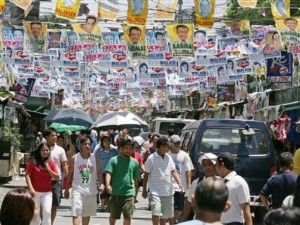COMELEC’s Director James Jimenez and Commissioner Rene Sarmiento answer the top ten questions of Filipinos all over the globe about the country’s first automated elections in 100 years on May 10, 2010, on the latest webisode of Examine!
Read the interview:
EXAMINE with Director James Jimenez (COMELEC) and COMELEC Commissioner Rene Sarmiento
September 10, 2009
G: Gang Badoy
J: James Jimenez
R: Rene Sarmiento
M: Mavie Almeda-Ungco (GMANews.Tv)
Gang Badoy: Hi, I’m Gang Badoy from GMA News.TV. Welcome to Examine. With me, I have Comelec Commissioner Sarmiento and Director James Jimenez. Hello. Thanks for coming. As you know Examine, we have questions culled from the public … pinadala ang questions. Game na?
Sarmiento & Jimenez: Game.
G: From Raffy Jimenez of Quezon City, “How about the present composition of the Comelec, do you think they’ll be able to recover from the Garci, Bedol incidents? Or do you think the poll body has eradicated the Bedols and the Garcis among its organization?”
J: Well, yeah. Yung composition ng Comelec ngayon, kilala naman ng lahat ng tao ang ating Chairman, Justice Melo, came from the Supreme Court, has a very long history of integrity, so I think we’re pretty safe with the composition. As far as Garci and Bedol, what the automation does, it makes it impossible for people like that to operate. Dahil mabilis ang ating canvassing, wala nang pagkakataon na guluhin o doktorin pa yung resulta. So if we have people like that, they will not be able to affect the system anymore.
G: From Carlo Montenegro, also from Quezon City, “What if the two special felt-tip pens allotted per precinct dry up before voting ends? There are 80,000 precincts on election day, each with 1,000 voters. Will there be enough pens for them? Does that mean two voters at a time lang?”
S: Alam niyo po, sabi ng batas, sa Poll Automation Law, nakalagay po yung continuity plans in case disaster arises or contingency risks. ‘Yan po ay paghahandaan po ng Comelec. ‘Yan po ay ilalagay namin sa General Instructions.
G: So mapi-picture ko ba na meron naman po kayong felt-tip pens?
S: Ay, syempre. Ito po’y paghahandaan po ng Comelec.
G: Carlo, that was your answer. Miguel Roxas of Caloocan asks, “What’s the possibility of the counting machines getting jammed with ballots? Did Comelec test the actual 8.5 x 30 inch ballots to be used on election day?”
J: Yes. I’d like to clarify. When we accepted the bid, there was a little testing done, but that was only for the purpose of qualifying the bid. Each machine that we get, 80,000+, will be tested 100%. So hindi pa tapos yung testing. Yung makina tinest namin noon, that everyone was saying “Ah, na-test na yan, ganyan ganyan” or hindi na-test, that is just for the purpose of qualifying for the bid. Each machine that will be delivered, all 80,000 machines, will be tested for things like these. Now, will it jam? Can it jam? Yes. These machines can jam, just like any machine can. Ang importante dito siguro, meron tayong contingency plan, meron tayong replacement protocol that calls for the replacement of a unit within two hours from the time it needs to be replaced.
G: Two hours is a long time for election day…
J: Well, two hours is a long time for election day, yes, but you have to understand this is all over the country also.
G: I know that a machine, like any machine, it can jam. But it is an expensive machine.
J: Yes, it is.
G: They should at least minimize the incidence of jamming.
J: Well, yes. The machines by themselves will not jam, except under extraordinary circumstances. I mean, you stick a screwdriver there, of course it will jam.
S: That’s why, Gang, we have Field Testing 1, and if necessary, Field Testing 2. We have mock elections, we have road show. We ensure that the machines will operate very safely.
G: Homer Pangilinan from Qatar has a question. “They say that SMARTMATIC-TIM … will get to keep private keys or digital signatures. Can they make changes …”
J: No, that’s wrong.
G: Ah, it’s wrong. The question is “Can they make changes in the precinct ERs without anyone knowing?”
S: They cannot.
G: It is not true that they have private keys and digital signatures. Who will have these private keys and digital signatures?
J: Comelec.
S: Comelec po, para malinaw sa kaibigan nating si Homer. Comelec will be in total control. SMARMATIC has to obey Comelec.
G: Pablo Manalastas of Ateneo. He asks “The Poll Automation Law specifies that the voter should be able to verify his or her votes after the ballot has been fed into the machine. Why has Comelec chosen to have this feature disabled in the PCOS?”
J: I don’t think that’s entirely correct. You have to understand that the law was crafted in order to fit in both a DRE model and an OMR model. A DRE model will have a touch screen – that’s an electronic ballot. The law was designed so that if you use an electronic ballot, then there would be a provision for voter verification. Whereas if you have a paper ballot, you don’t necessarily need voter verification. Hawak niyo na eh. So you just feed it into the voting machine.
G: So in a touch screen nga, it’s gonna look like parang an ATM. Parang, what’s my balance? And you’re gonna see it solely on the screen.
J: Not on the screen, but a printout. And that’s exactly what happened in the ARMM. When we used a DRE touch screen machine, it spat out a ballot. A kind of electronic receipt. That’s for you, for the voter. But that’s because it’s two systems. There’s nothing wrong with it. It’s just that for this election, we chose to use an OMR solution, where you have a paper ballot.
G: Do you have a reason for that?
S: If I may add, yeah. Nag-survey among voters globally, ang gusto ng botante ebidensya, may pinanghahawakan sila. That’s why PCOS, ‘yan po ang gagamitin natin because may paper ballot. May panghahawakan ang mga botante.
J: Just to clarify that. Even with the DRE or a touch screen system, you don’t get to take home the ballot. What we’re afraid of, and everyone’s afraid of, the minute you get out of the polling place, you show it to some operator and say “Pay me.” You can’t take it home with you.
G: Next question from Nerika of Hawaii, “What if the GPRS connection is bad and transmission of results is slow?”
J: First of all, right now, we have what we call a site survey ongoing. That’s where we go out to all of the precincts that we’ve identified already and check the signal there. If the signal doesn’t come out as expected, then we will put up our own satellite system there. Which means that on election day, we will have a very reasonable expectation that all places will be able to transmit at a certain level of efficiency. Ibig sabihin, may signal. Kung ngayon pa lang wala nang signal, tayo ang magse-set up ng sarili nating satellite.
S: Gang, gusto ko dagdagan yung sinabi ni James. Two days ago, we had a meeting with the networks, SMART, GLOBE, and others, and ‘eto po yung pinag-usapan namin. That is our concern. Ayan ay aayusin namin, and they are part of the technical working group headed by a Comelec official. They are cooperating. We want that this election be successful.
G: An admin officer from Paranaque, Victoria Garcia, said “Isn’t there disenfranchisement in the chosen system of manual input of votes and not choosing from a computer? Kasi kung mali ang pagkashade mo, or maling ballpen ang gamit mo, saying na kaagad ang boto.”
J: No. The voting instructions [are] very important. In fact, it’s only two steps. So it’s actually very simple, and kung magkamali ka, then that’s unfortunate. But we’re gonna be doing everything to make sure the level of mistakes is as minimal as possible.
S: That’s why the law, it provides for massive information drive six months into the elections. So lahat po ng mga estudyante, guro, simbahan, NGOs, GMA, helping each other to inform and instruct the people, to guide the people.
J: In fact, I’m on one of the social networks, and I monitored a recent conversation. And someone is saying, “How do you vote in an automated system?” And some person starts telling that other person how, and it was perfectly correct. The instructions being given were exactly right. But the point is, it is that simple. And we are really reaching a lot of people.
S: I think what’s important is an attitude of hope, not the attitude of gloom and doom, but one of hope. Because this is poll automation, so gamitin po natin ito for good. It should be done for change.
G: Sarah Montemayor from Puerto Princesa said “Half of the 23 towns in Palawan are island municipalities that do not have 24-hour electricity and mobile phone signals. How will the automated elections be done in such places?”
J: Well, first of all, the machines have batteries that last more than 12 hours, so we have enough power to conduct the voting. And like I said, we will have satellites set up where mobile phone signals are not available. It’s not that expensive, because the satellite is already there. All we will be introducing will be the LAN satellite, just to beam it up and send the results back. It’s a very inexpensive solution.
S: If I may add, the archipelagic character of the Philippines has been considered. 7,000 islands – ito po ay pinag-aralan, kaya the concerns with the landline, cellular, and satellite…
G: Are you excited, worried, afraid, petrified for the elections?
S: Me? I’m excited. This is something new. After 100 years gone, the last election we had was in 2007. The first election we had after the colonial regime was in 1907. A total of 100 years of manual elections. So this is the first time that we have this automated election system. I’m excited, this is something new. We seize the day, we seize the opportunity.
G: I have a fear that automation will just make it wholesale cheating…how do you assuage me? Comfort me.
S: Yeah, nagkaroon ng dagdag-bawas, which is massive wholesale cheating, because of the slow process in the voting, counting, and canvassing. Palipat-lipat yung mga dokumento, nalilipat from one place to another, nababago. Ito, speed. From the precinct to the munisipyo, two minutes. From the municipal to the central server, COMELEC, one or two minutes. So speed ang kalaban po ng massive cheating, dagdag-bawas. The problem in Pampanga, diba si Ka Among at si Baby Pineda. Because of misappreciation of ballots, Nanay Baby ba, Baby ba, Among o Ka Ed. Mawawala yan because of the shading of the oval or circle.
M: So no way po na magiging posible yung sinasabi ng critics na pwedeng ma-preprogram yung mga PCOS para mag-contain ng results.
J: No. That particular fear comes from a lot of lack of understanding. You see, the process requires that before election day, the PCOS, that’s the counting machine. The counting machine that you will use for the precinct goes through two tests to prove that it is empty, literally. And then on election day itself, before anything happens, the machine prints a zero report, which means that it will show that it has zero votes in its memory. The ballot boxes will be upturned to show that it is empty as well. So a pre-programmed PCOS would not be able to print a zero report. For the zero report, the initialization report, is key and that will be the procedure throughout the 80,000 precincts.
G: And you personally have handled these machines?
S: We have seen these machines during the bidding process. We have seen these machines in the demonstration. We have seen these machines, and people are satisfied after being educated about these machines.
G: Sir, I am not disrespectful at all, but I am almost certain you’re not a machinery expert or an IT expert. Did you consult experts about these machines?
S: We have this advisory council, Gang. Under the law, this is the contribution of NGOs and electoral reform groups in this law. It provides for private IT experts from public and private sectors. They have advised us.(G: akala ko kayo lang yung nagdecide) Ay hindi po. This is not a Comelec fruit, itong PCOS, itong automated election system. Ito po ay produkto po ng Kongreso, House and the Senate, and with the advice of these electoral reform groups.
Mavie Almeda-Ungco: Diba kasi Sir, sa dati pong sistema na manual, pag may isang kandidato po na sumigaw ng “daya,” gagawin lang, ire-recount lang po yung balota. Kung halimbawa ako kandidato tapos sasabihin ko nadaya ako, ano ang sistema para doon?
S: I can explain that. We have a protest mechanism na ilalagay po natin sa General Instructions. So ano ang gagamitin ng mga abogado as ebidensiya? The paper ballot. Hindi po ba? Na fini-fill up-an. That’s one. Number two, election returns, a total of 30 election returns. Andun yung pangalan, andun yung boto, babasahin publicly. Number three, yung digital copy of the paper ballot na kinopya po ng makina. So eto yung gagamitin na ebidensiya… in case protests are filed by lawyers and complaining candidates.
M: Would they also be faster to retrieve than let’s say, manually counting the ballots? Kasi diba before po kasi, bubuksan yung ballot boxes, bibilangin, ire-recount. Kung ganyan po, mas madali po ba siya makuha?
S: Well yung balota po nasa transparent ballot box naman, di po ba? As a matter of fact, nasa batas yung random manual audit. A few days after the elections, to check kung accurate yung proseso. It can be opened and checked by this random manual audit committee or commission. So madaling buksan po. Hindi po mahirap.
G: Parang you seem to have everything covered. Pero if ever man merong may mag cry “foul” or mag cry “cheat”, what do you think they will be complaining about? Kasi na-cover mo na yung pre-program, na-cover mo na yung digital signature, and no cloned keys, what do you think they’ll say?
J: The thing is, because this is a new system, there will be people who will challenge it. They will not be challenging it necessarily because it’s broken. They will challenge it just to prove that it’s not broken. So there will be a lot of that. So we expect that. You know, we’re not under the illusion that everyone will be singing Kumbaya at the end of it. (G: High five at the end of the day). Exactly. So we know that there will be challenges. And we would probably welcome that. If only to prove, like I said, that the system, in fact, is not broken.
G: Thank you very much, we’ll wrap up. Any last messages Sir for our viewers?
S: Well, ang sa akin lang po, this is something new, ‘no Gang? After 100 years, one century, just imagine, we’ll have this new system. So make the most out of it. I always say this is a gift, and because this is a gift, we have to treasure this gift. Pagbutihin po natin for the good of our country.
G: James?
J: Vote.
G: Thank you. This has been Examine.

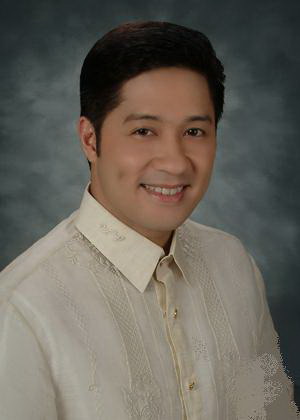
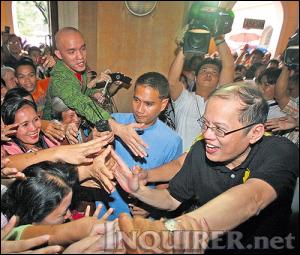
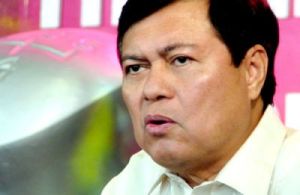 Now, like I said in my other blog, it is very critical for Villar to get a popular running mate that will boost his political stock even more. For example, Villar has a respectable following in the ABC class, yet he is still second to Chiz Escudero, who, political observers note, has a very solid 30% class base support. To be able to win, Villar has to chip Escudero’s numbers in this class.
Now, like I said in my other blog, it is very critical for Villar to get a popular running mate that will boost his political stock even more. For example, Villar has a respectable following in the ABC class, yet he is still second to Chiz Escudero, who, political observers note, has a very solid 30% class base support. To be able to win, Villar has to chip Escudero’s numbers in this class.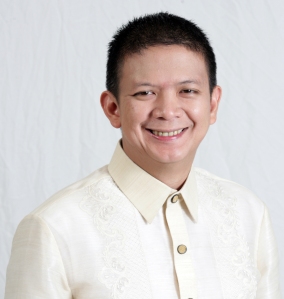 Chiz hurt by Aquino’s sudden entry
Chiz hurt by Aquino’s sudden entry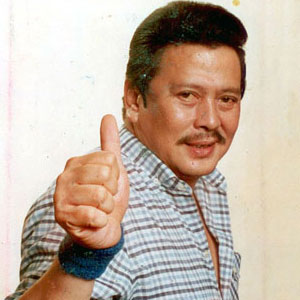
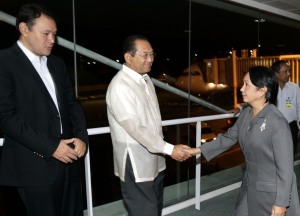 Teodoro’s numbers improving
Teodoro’s numbers improving